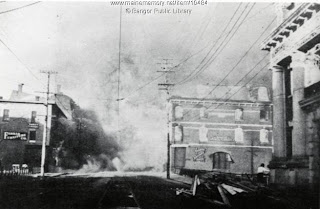 I usually feel pretty cool at the library. I know how it works; where to find books, how to use the catalog, where the bathrooms are, how to log onto the network, you know, all the important stuff. But today I felt like a total newbie.
I usually feel pretty cool at the library. I know how it works; where to find books, how to use the catalog, where the bathrooms are, how to log onto the network, you know, all the important stuff. But today I felt like a total newbie. Disclaimer: I was at a new-to-me branch, The Audubon Library in Amherst, NY, part of the Buffalo-Erie System.
First, I stood in line for at least 5 minutes waiting to check out my books and didn’t notice that there was an open self check out station right next to the librarian manned spot. To be fair, the signage was poor and the computer blended in with the rest of circulation desk equipment. Red faced I stepped up, scanned my card and was informed I had a .75 cent fine.
Moving on I placed my books on an electronic mat in front of the computer and tried to scan the bar code.
But where was the bar code?
All I could find was the ISBN bar code, not the usual library one.
What was happening?
Who moved my cheese?
I glanced at the librarian helplessly. She took one look at what I was attempting and sighed deeply before leaving her post and walking all the way around the desk to my side, the dummy side.
We started from scratch but this time she told me to leave my books on the mat and be patient. Magically I saw the titles flash up on the screen, even though the books were stacked 4 deep.
“What is this?” I asked incredulously.
“It’s a new system,” she said, pointing out the obvious.
“Yes, I can see that. But what happened to the bar code system?” I wondered.
“Oh, that’s long gone. The books all have microchips in them now.”
“The books have MICROCHIPS?” I gaped at her and my obnoxious inside voice said, “library are being shuttered, children can’t go to storytimes, librarians are on the street and this struggling county is putting microchips in books?”
“Really? Why did they do that?” My daughter shot me a settle-down-and-don’t-be-rude look.
“Don’t know,” she answered nonchalantly, as if it were the most normal thing in the world for a book to have a microchip, “we just do what they tell us.”
“That is going to cost a fortune!” I marvelled.
“Yup,” she said, “have a great day!”
I went straight home to investigate the madness.
The technology is called RFID: radio frequency identification device and its ancestors date back to World War II when radio waves were used to identify aircraft. It hit the big time in the 1970s when it was introduced as an electronic toll collector - or what my family refers to as “EZ Pass Go!” - the little tag that you velcro to your car windshield.
Currently the largest RFID customers are the United States Department of Defense, they use tags on all shipping containers leaving the U.S., and Walmart, with 25,000 systems in 2,800 stores. RFID is popping up everywhere to help us survive the difficult days in the rat race...Dairy queen can send coupons to your smart phones, zipcars can unlock the car door, 7-Eleven can charge you for that slurpee right through your phone and Wynn Casino has chips in their high value chips - Wierd.
But beside the cool factor why are libraries spending millions of dollars to track their books?
I uncovered a few reasons, none of which seemed very convincing (according to me, who is neither a librarian nor a picky consumer).
1. RFID chips provide a “superior check out process” for the consumer, several books can be checked out at once.
2. RFID is the technology of the future and bar code scanners will go the way of the VCR.
3. RFID drastically reduces the cost of doing inventory because the books can remain on the shelf.
4. Chip checkout reduces the repetitive strain injuries of circulation desk staff
Because the RFID tag can store information, some libraries and patrons are concerned about privacy issues. Not only can the library track what you read and keep all that information in a database, but now they can track where you go with your book (would the librarian find out that my paperback went with me on vacation to Italy?), and the book itself can track who has read it in it’s tiny, little brain.
RFID use at the library is a complex topic with many pros and cons. Here is all I’m saying, if we (library lovers) want the public on our side we have to demonstrate that we’re willing to tighten our belt and make do, just like everyone else (except Wall Street)...I’m not sure that spending the money to create the Jetson Library of the future sends that message.







